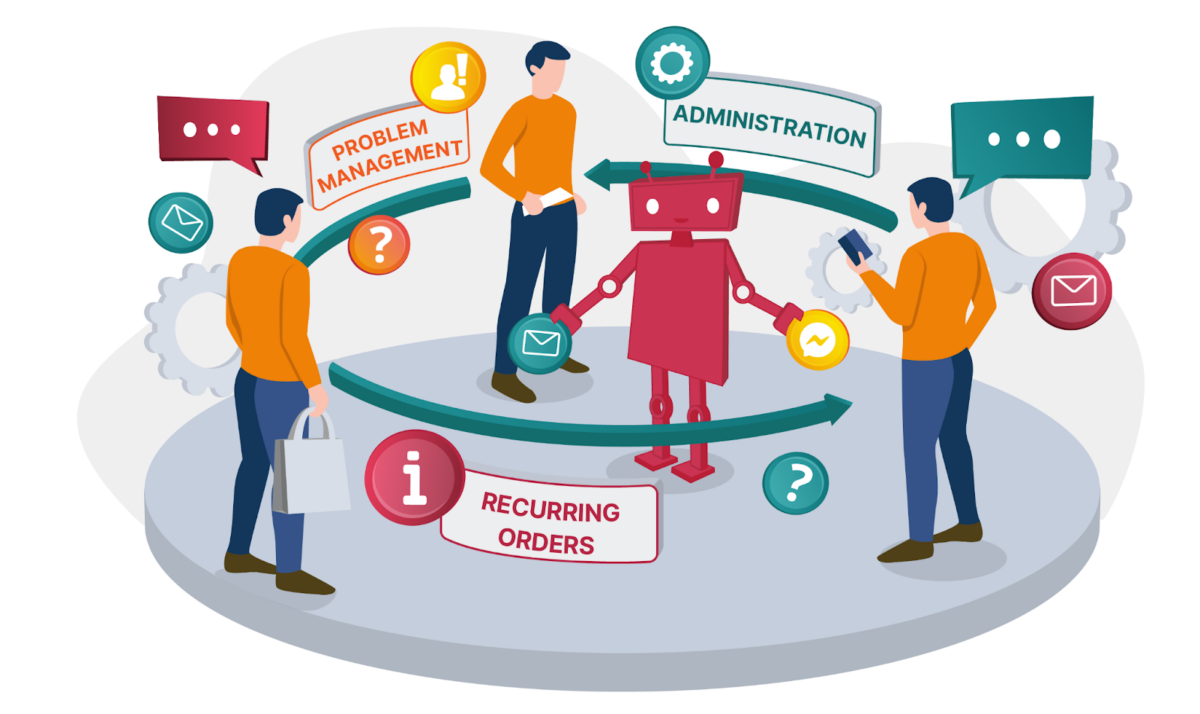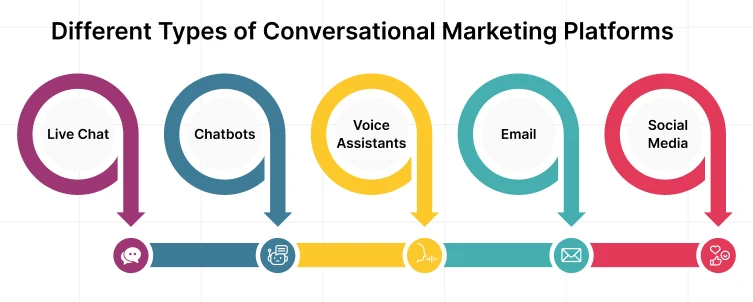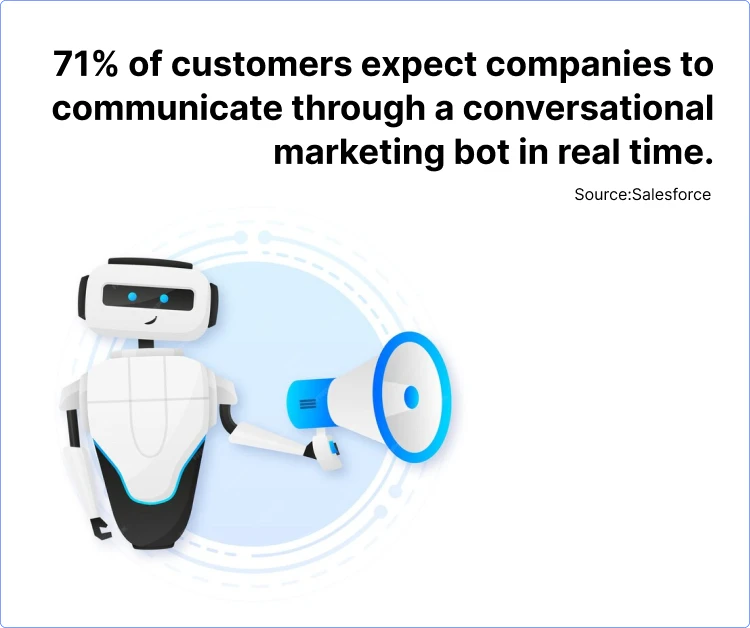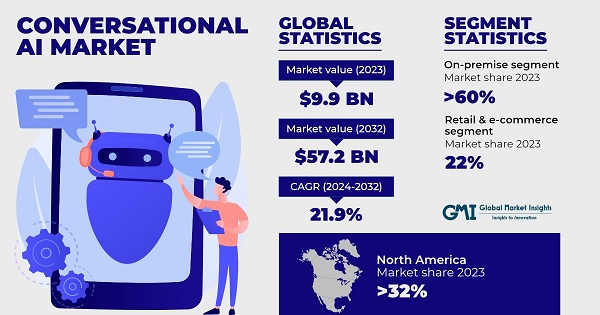What is Conversational Marketing?
In our times, customer engagement is always a focal point and companies are always looking for timely strategies. Some of these concepts include Conversational Marketing which has greatly changed the way companies communicate with listeners. It’s a new, radical way of marketing that involves setting up a line of communication directly with customers to engage them in a conversation with the brand. This guide elaborates on the concept at the core of conversational marketing, its benefits, and ways to apply it.
Conversational Marketing is a marketing approach that directly engages customers and personally communicates with them to pass through the buyer Journey, unlike traditional marketing communication where an organization transmits a uniform message to the public. Conversational marketing targets discussions. The above approach can be useful in improving the relationship that the firm has with the customer. Thus, increasing customer satisfaction and loyalty.
For a more in-depth understanding, you can read this comprehensive article on Hubspot.
Why Your Business Needs a Conversational Marketing Platform
This would require a Conversational Marketing platform at the root. Such platforms help to bring together different conversational marketing tools: chatbots, live chat, and messaging apps into one platform for business-customer communications. They help automate responses, manage customer data, and provide insights about customer behavior.
To explore various platforms, you can check this guide on drift.

Benefits of Conversational Marketing
There are many reasons to use Conversational Marketing. However, most are advantages of the traditional ways of marketing that allow a business to communicate with customers in real-time and give instant replies to the customer’s queries. Because of its instance, there is greater customer satisfaction with an increased conversion rate. Besides, Conversational Marketing captures valuation information on customers for personalization in marketing and provides a better general customer experience.
Types of Conversational Marketing

There’s conversational marketing in many different forms, each with fantastic features and consequent benefits: chatbots, live chat, messaging apps, and voice assistants. These types have diverse purposes and could be used at various stages within the customer journey.
Chatbots:
The chatbots are automated programs for chatting in a human-like manner. They answer frequently asked questions, product recommendations, and process orders. Chatbots are available 24/7, hence, this may serve as a great potential tool for instant support among customers.
For detailed insight, you can visit chatbot.com.
Live Chat:
One-on-one live chat involves live conversations of customers with human agents. Such conversational marketing works well for complex queries and heavily/requires a bit of a personal touch. Conversations through live chat allow agents to give in-depth responses and develop a rapport with their customers. To learn more about live chats, see LiveChat.
Messaging Apps:
These apps allow companies to reach clients on platforms they use anyway. Thus, offering them both an easy and familiar way of communicating with the business. It’s one of the significant reasons messaging apps like WhatsApp and Facebook Messenger are fast gaining wide adoption for conversational marketing. For more on the messaging app, check out Sprout Special.
Voice Assistance:
Alexa and Google Assistant by Amazon and Google, respectively, are more recent forms of conversational marketing. These assistants make use of voice recognition technology so that they may understand queries from the consumer side and reply in turn. Being fully hands-free, voice assistants are especially suited to information provision, recommendation, and transaction execution purposes within specific applications.
For additional info, visit Voicebot.ai.
Implementing Conversational Marketing Software
To conduct conversational marketing, a company will want the right conversational marketing software. It integrates various conversational marketing tools with one unified platform to control customer interactions. For the selection of top software options, see G2. This translates to chatbot builders, live chat interfaces, and advanced analytics dashboards for tracking performance.
Qualified Conversational Marketing software is tailored to meet the needs of businesses. It boasts a rich set of cutting-edge features, such as AI-driven chatbots, CRM system integration, and personalized messaging all of which it enforces to let businesses provide frictionless and continuous customer experiences across all touchpoints.

Conversational Marketing Examples
Many successful conversational marketing examples demonstrate how well this works. For instance, one e-commerce brand drove customized product recommendations to its customers with a chatbot designed for conversational marketing. It will ask customers for their preferences and use such information to recommend products that best fit their needs, thus increasing conversion rates and raising customer satisfaction.
Another example is a travel company that implements live chat to allow clients to get help in booking their journeys. This consists of information on destinations, reaches of flight options, and hotel accommodations. This kind of personalization created an engagement with the customers since it built trust between them, and thus, they could complete their bookings.
One such company in this niche provided support to customers through messaging applications. Customers could send all their queries via WhatsApp, Facebook Messenger, and other platforms and get instant replies from support agents. Customers loved this approach because it was convenient and familiar.
To see more examples like that, read this article on Forbes.
What is the purpose of conversational AI marketing?
Conversational AI marketing can be a marketing technique that is aimed at improving conversational marketing through the adoption of Artificial Intelligence. NLP inherently aids in enhancing chatbots’ capability to understand the query posed by the customer. Their tone and the complexity of the conversation thereby enhance the ability of chatbots to provide satisfactory responses to customers.
Learn more about AI marketing on MIT technology review.
Conversational AI marketing also provides countless features like sentiment analysis, which allows following up on customer sentiment and responding to it. The AI reads between the lines of data of customers to analyze their behavior and identify trends for inputs on optimizing marketing strategies.

Choosing the Right Conversational Marketing Tools
Choosing the right tools for conversational marketing is pretty essential to the success of it. For instance, if a company deals with many customer queries every day, then for conversational marketing chatbot would be a good tool. If the firm has complex interactions with customers, then live chat would work best for that business. It’s also important to select tools that can easily integrate with other systems. For example, a conversational marketing platform like this, paired with the capability of a CRM system, really gives you all-around visibility into interactions with customers that help businesses and offer much more of a personalized experience.
To read the detailed guide on selecting tools, visit MarTech Advisor.
Getting Started with Conversational Marketing
Below are steps to get started with conversational marketing for businesses:
Set Goals: Identify what you want to achieve through conversation marketing. It may be customer engagement, conversion rates, or a higher level of customer support.
Choose the right tools: One needs to choose conversational marketing tools that will suit the needs. Look at factors such as ease of use, integration possibilities, and cost.
Implement the software: Deposit and integrate your conversational marketing software with existing systems. This might involve setting up chatbots, live chat interfaces, or messaging apps.
Train your team: Ensure that new tools are known to every person on your team and how to work with them. This could be through training sessions workshops, or even online tutorials.
Monitor and optimize: Track your conversational marketing performance and optimize it. Use analytics to identify improvement areas in your strategies.
For step-by-step instructions to get started, look in Drift.
The Future of Conversational Marketing
Conversational marketing has a fantastic future. After all, it’s not like continuous development in AI and machine learning will shrink its potential. The more advanced AI gets, the better chatbots and voice assistants will be provided. To understand what customers mean by something and answer them with even more personalized and accurate interaction.
Visit Forrester, to get a deep insight into the future of conversational marketing.
Also, this will be realized by the blending of conversational marketing with technologies like Augmented Reality and Virtual Reality into newer sides of customer engagement. This might involve AR-based virtual try-ons or VR-driven product demos in an immersive setting. After all, everything happens over a conversational interface.
Final Thoughts
Businesses can be ahead of these trends and adopt refined innovations that will help them remain competitive and retain their ability to provide great customer experiences. For those looking to understand more about the world of conversational marketing, this could extend to further reading case studies and industry insights to enlighten on what exactly works best and what does not. From just getting started right through to maximizing the output of your existing strategies, conversational marketing offers a multitude of ways through which businesses can engage customers and drive growth.
FAQs
What is Conversational Marketing?
Conversational Marketing is a marketing technique that involves turning real-time and highly personalized communications with customers into a sales tool, also using tools such as chatbots, live chats, or even messaging apps.
Why is the use of Conversational Marketing crucial?
It raises commerce customer experience, client satisfaction, and sales conversion by delivering prompt, individualized answers and creating long-term customer relations.
What are the means that are used with conversational marketing?
Some of the core tools are chatbots, live chat, messaging platforms, and voice interfaces that are built on the brand’s Conversational Marketing system.
How do applications of Artificial Intelligence help advance Conversational Marketing?
Natural language processing, sentiment analysis, and predictive analytics lend an interpersonal and accurate feel to the conversation with the application of AI.
What are some examples of successful Conversational Marketing?
These include but are not limited to, e-commerce chatbots recommending products, live chats in reservations for the tourism sector, and technical companies assisting messaging apps.


